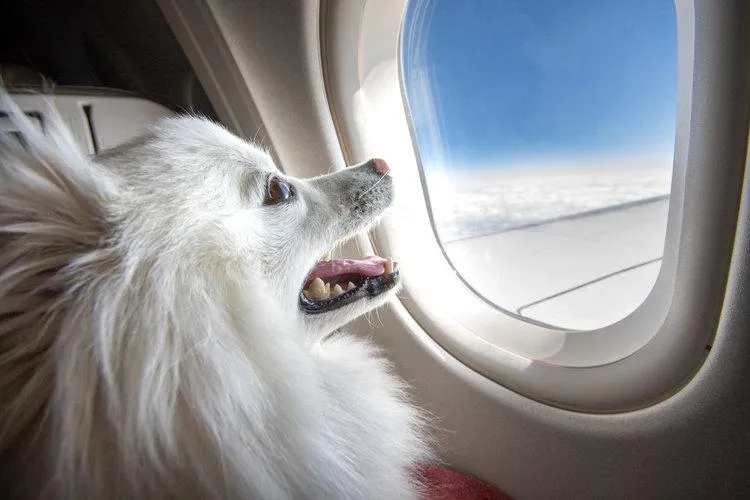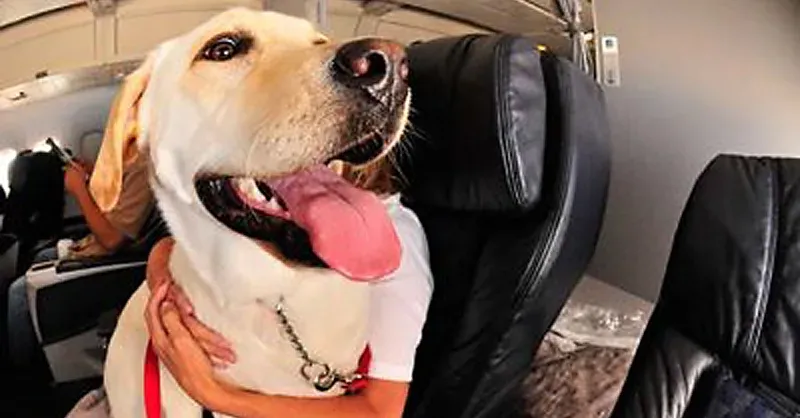A Comprehensive Guide to Booking a Flight with Your Canine Companion
Traveling with pets can add an extra layer of complexity to planning a trip. If you want to bring your furry friend along on an airplane, there are important steps to take to ensure a smooth journey. In this article, I’ll cover everything you need to know to book a dog-friendly flight, from restrictions and paperwork to tips from my own experiences.
Check the Airline’s Pet Policy
The first thing to do is research the policies for the specific airline you want to fly. Policies can vary widely between carriers. Most major airlines in the US allow dogs and cats to travel in the cargo hold or in the cabin as carry-on, if they meet certain requirements. However, some budget airlines don’t accept pets at all. It’s also a good idea to check if the airline has any travel bans or restrictions related to the destination country. Avoid surprises down the road by thoroughly reviewing the pet policies page on the airline’s website before booking your tickets.
Ensure Your Dog Meets Size and Age Restrictions
Nearly all airlines have size limits for pets travelling in the cabin, usually requiring the animal fit comfortably in a carrier that can fit under the seat in front of you. Common maximums are around 20 pounds or so. There may also be age restrictions, like animals must be at least 8 weeks old. Measure and weigh your dog beforehand to double check eligibility. Flying a pet that is too big risks being denied boarding or having to switch to cargo hold travel at your cost.
Reserve Your Pet’s Spot Early
Space is limited for animals in the cabin, so it’s best to book the pet ticket soon after purchasing your own. Some carriers even require a separate pet reservation be made 30 days in advance. If no spots appear available for your chosen flight dates, consider alternate dates with availability or paying extra for guaranteed “PetSafe” travel in the cargo hold instead of risking being bumped. Give yourself plenty of time to find the best pet travel option.

Gather Required Paperwork
- Vaccination records: Most airlines demand proof dogs are current on rabies and other routine vaccines. Have vet records accessible either electronically or hard copies.
- Health certificate: Some international destinations may require an examination from a licensed vet within 10 days of travel certifying the dog has no contagious diseases.
- Travel crate/carrier: The crate must be big enough to stand up and turn around in, but small enough to fit under the seat. It must be FAA-approved for flights.
Having documents in order far ahead saves stress chasing last-minute vet appointments. I’ve learned to prepare well in advance through personal experience snagging a same-day health certificate as my flight was boarding!
Book Direct with the Airline Whenever Possible
From my experience in the travel industry, it’s generally best to book the actual pet ticket direct with the airline rather than a third party site. Airlines set their own policies, and third parties don’t always have the most up-to-date information. You also risk the third party booking falling through if requirements change since you aren’t directly with the source. Booking direct ensures you talk to airline representatives who are most familiar with pet travel policies and procedures.
Consider Your Dog’s Personality and Needs
Not every dog is suited for air travel. Think about how your pup typically handles new places, sounds, and people. Dogs that are easily stressed may find flying overwhelmingly unpleasant. It’s also important your pet is crate trained at home to help the experience go smoothly. Consider extra calming aids if your dog shows signs of anxiety. While most dogs do fine, be conscientious about your individual pet’s comfort level and limits. Their wellbeing should come before any travel plans.
Know What You Can and Can’t Bring in the Cabin
There are strict rules around what you’re allowed to bring in the cabin with your pet carrier. Food, toys, blankets—pretty much anything besides the carrier, leash and poop bags are a no-no for carry-on according to TSA policy. You’ll need to check any additional items like water, medicine or comfort items. It’s no fun stressing at the airport about getting toys confiscated, so I save myself hassle by only bringing essentials that fit regulation

Prepare to Pay Up!
Pet airfare and fees can add up fast depending on the route. Expect to pay anywhere from $100 to $300 or more just for the animal’s spot. Then factor in vaccination/health check costs, kennel purchase, excess baggage charges if flying internationally. Most airlines count pets towards the passenger’s baggage limit. It’s a major commitment cost-wise, so I always “price out” the full trip expenses early on to avoid bill shock later.
Don’t Risk Flying During Extreme Heat or Cold
While airlines have temperature controlled holds, protecting your pet means considering risks of flying during extreme heat or frigid weather. The tarmac can experience more extreme temps than the cabin. There are also health concerns like heat stroke in hot climates. If possible, I would reschedule travel for a more moderate season if bringing a furry friend along—their comfort should come before human travel plans. Better safe than sorry where a pet’s life may be at risk!
Expect a Smooth Process if You Prepare Thoroughly
In summary, if taking the proper steps like reviewing policies, getting paperwork in order well in advance, booking early, knowing regulations— your dog’s air travel experience can go really smoothly. Kind of like how preparing extensively for your own vacation ensures minimal stress. From my experiences, the key is diligent pre-trip planning. Follow airline rules to a T and your pooch will be enjoying the journey right alongside you in no time! Safe travels to all.
I hope this comprehensive guide has addressed any concerns or questions about taking your canine companion flying. Please feel free to contact me if you need any clarification or have additional inquiries. Wishing you and your furry friend many happy, healthy travels together.

Important Considerations for Booking a Flight with your Dog
| Detail | Description |
|---|---|
| Dog Size | Airlines have size and weight restrictions for dogs in cabins and cargo holds. Measure your dog and check airline policies. |
| Dog Breed | Some dog breeds are considered “brachycephalic” or short-snouted and may face restrictions due to health concerns. |
| Vaccination Records | Most destinations require an up-to-date vaccination record including rabies. Have paperwork ready to present at check-in and entry. |
| Reservations | Most airlines require advance booking and payment of pet fees which can be upwards of 5 each way. |
| Cabin vs Cargo | Consider whether your dog must fly in cargo or if their size allows cabin travel with you for better supervision. |
FAQ
-
What documentation is required to travel with a dog on a flight?
Most airlines need a health certificate from your vet saying your pup is healthy and up-to-date on shots. You will also need to find out if the destination country has any quarantine rules. It’s smart to check on those requirements ahead of time!
-
How much does it cost to bring a dog on a plane?
Depends on the airline and size of your furry friend. Generally the fee is somewhere from $100 to $200 each way for domestic flights within the US. Luckily for small dogs, there is usually no added cost besides the ticket price. International flights tend to be more expensive basically.
-
What size carrier do I need for my dog?
The carrier must be large enough for your doggo to stand up and turn around in freely without touching the sides. Most airlines require the carrier to fit under the seat in front of you. Measure ahead of time so you don’t wind up with a carrier that’s too big or small.
-
Can I bring my emotional support dog on the plane?
Emotional support dogs or animals generally have more lenient flying rights than pets. However, you will need documentation from your medical provider stating your need for the animal. The paperwork and process differs by airline, so always check requirements carefully beforehand!

-
Is it safe to sedate my dog for the flight?
Talk to your vet about this option despite some concern over their well-being if something went wrong. Sedation might help a normally anxious pup relax on the plane journey. However, you want to avoid over-sedation which could possible cause issues. It’s best if your veterinarian knows your dog’s exact travel plans and medical conditions.
-
What age can puppies fly?
The minimum age is usually 16 weeks for domestic flights within the US. Some international destinations have higher minimum ages upwards of 6 months. Puppies still with their mothers can fly even younger. Squeaky toy or chew might help entertain little ones. However, young pups tend to be quite unpredictable on planes.
-
Is it better to fly directly or with connections?
Nonstop flights are best if available to cut down on stress for you and your pup. Less time spent confined to a carrier is definitely a plus. However, connections flights aren’t impossible if the layovers are reasonably short. Feed your dog right before flying to avoid motion sickness. Cross your paws and hope for smooth sailing!
